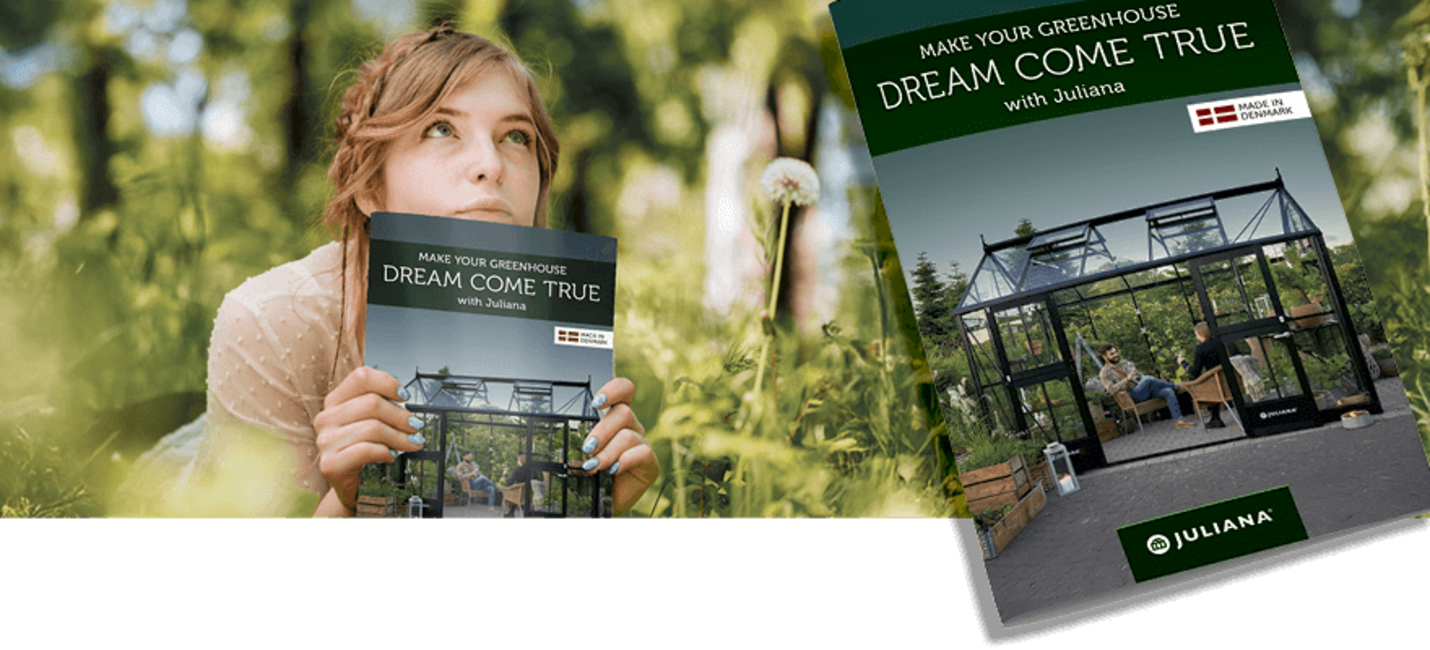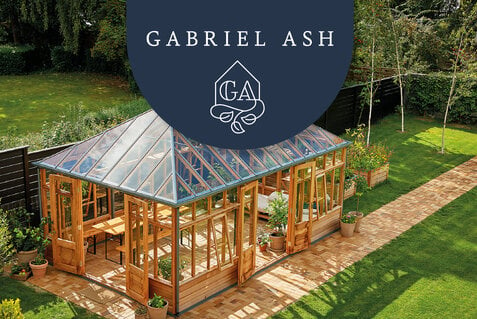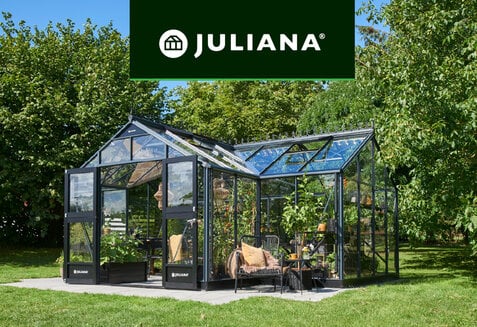Guide: Tomatoes in the Greenhouse
Is there anything better than growing tomatoes in the greenhouse that you can pick directly? We do not think there is, therefore, we have in collaboration with garden expert and garden journalist Lars Lund made you a detailed guide in which you can read more about cultivating tomatoes in the greenhouse. Learn about the best way to grow tomatoes and how to sow your tomatoes right from the beginning. Read about this and much more in the following guide.
When it comes to varieties of tomatoes, there are many to choose from. The varieties changes and everybody has their favourite. Some are especially suitable for outdoor planting and others thrive best in a greenhouse. If you want to grow tomatoes in your greenhouse, then you should get some specific varieties. Most tomato varieties are suitable for planting in the greenhouse. The most traditional ones are:
- Cherry tomatoes (favorita)
- Plum tomato (Roma)
- Gemini
- Beefsteak tomatoes (Marmande)
- San Marzano
All these varieties are perfect for cultivating in the greenhouse. They need a lot of light and the right temperature to thrive.
When your tomatoes are growing, they only need small doses of water
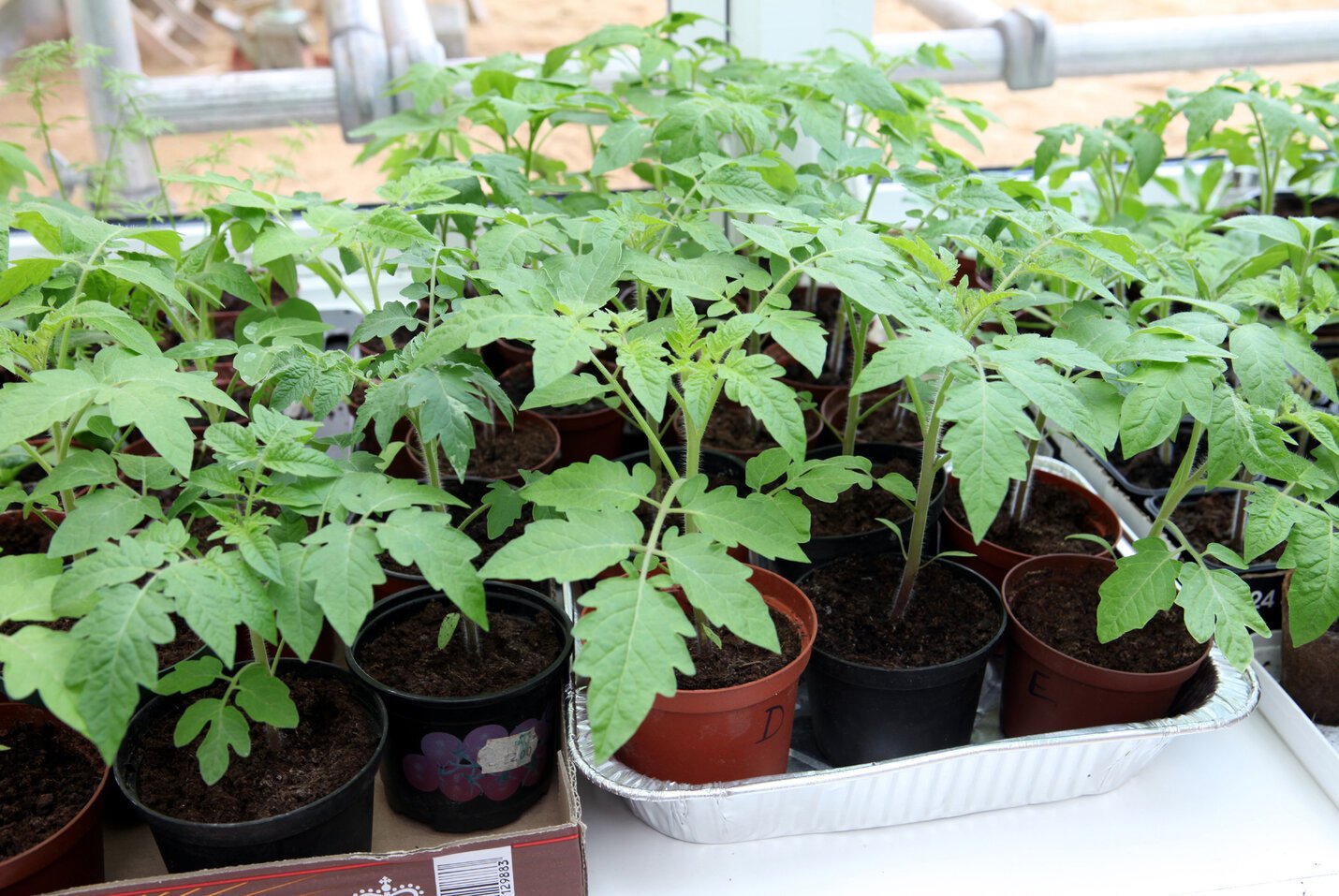
Photo: Grøn Kommunikation ©
How to cultivate tomatoes in your greenhouse
Should you choose to sow the tomatoes then you need to make sure to pre-germinate before planting the seed in the soil. When pre-germinating you leave the seeds in small trays at about 25 degrees in a windowsill or under additional heat. Make sure to only put a few seeds in each tray so they have enough room to germinate. Remember to let the plant get as much sunlight as possible while they are germinating.
When they start to germinate, you can put them in a propagator with a lid. Keep the temperature at 18 degrees, and then keep them moist at all times and place them somewhere with a lot of sunlight. The more they grow, the bigger a pot they will need. When they begin to grow small leaves, they are ready to be transplanted to your greenhouse on the condition that the temperature outside does not get below 12 degrees at night. The pre-germination can also be continued without a propagator with a lid.
Should you choose to buy the small tomato plants, then you can transplant the tomatoes to the greenhouse much faster. You can cultivate tomatoes in capillary boxes directly in the soil or in bigger pots. Before the tomatoes have grown big enough, you can choose to use pot holders or shelves to place the plants high. This saves floor space in case you have other plants you want to have in the greenhouse as well.
How to transplant your tomatoes
When you are ready to transplant your tomatoes, you should have a lot of fresh soil ready. It is best to transplant you tomato plants when the temperature is at least 15 degrees in your greenhouse day and night. By heating your greenhouse, you can easier control the temperature. If the tomato plants are transplanted too early, the root system will stop growing and the plant may evolve a weak root system. The plants should be 30-45 cm tall and have their first inflorescence. Furthermore, they should be 6-8 weeks old with dark green leaves and a strong stem. Before transplanting, they must be hardened for two weeks. This is done by placing the plants in the greenhouse during the day and at night they are returned to the house. After the hardening they are much more tolerant to cold. Ideally, the temperature of the top layer of soil should be 21 degrees and never below 15 degrees.
The tomato plants are planted directly in the soil with a lot of space between each plant. This way you increases the crop yields from every plant. Especially tomato plants will grow large and strong roots. Therefore, you should make sure that the roots are as deep in the ground as possible. In fact, it is not a problem if some of the stem is below the soil as well. The small hairs on the stem will evolve to roots to strengthen the root system. The tomato plant needs strength when the tomatoes begin growing, and the stronger a root system the more resistant the plant will be.
Tomato plants have one special requirement for growth. They need to be pollinated if you want the tomatoes and not just the flowers. Therefore, it is important to keep doors and windows open so you create the best conditions for pollination. To make sure the pollination have succeded you can gently shake the plants. It does not necessarily have to be a bee that does the job.
While your tomatoes are growing: how to cultivate them
Now your tomatoes in the greenhouse should be well underway and growing tall. Make it a routine to check on them weekly. They grow fast and the plants that grow too big give less flavourful tomatoes. Remember to prune the tomato plant when it gets to big for the the greenhouse, or when it is late in the season and you know it only gives small and green tomatoes. Continously remove side shoots which grow along the vertical stem (this does not apply to determinate tomatoes), so you continuously trim the plant, and make sure to nip the new leaves. Also remove any new stems that grow along the surface of the soil.
When your tomatoes are growing, they do not need a lot of water all at once. They only need a little water each day since this gives more dry matter in the tomatoes which is a good thing. An irrigation system is quite helpful. It takes care of the daily watering and makes sure to give the plants the right amount of water. Fertiliser is a must if you want the most juicy and flavourful tomatoes as possible. The plants need a lot of nutrition, therefore, fertiliser is quite useful, but follow the instructions on the packaging that the fertiliser comes in, and avoid fertlising when the temperature is above 28 degrees in the greenhouse. Here the plant needs as much water as possible to cool and it is so easy to accidently overfertilise (especially in capillary boxes).
Make sure to tie up your tomatoes. As they grow bigger and gets small leaves, the stem will also get heavier. To avoid that the plants are growing too close to the ground, you can tie the plant to a strong stick of wood or plastic. If not it can prevent other tomatoes from growing big and getting juicy.

Photo: Juliana Greenhouses
How to harvest your tomatoes
Depending on how much sunlight your tomatoes have gotten and depending on the chosen variety, the first tomatoes will be ready for harvesting in July. Thereafter, your plant will keep producing fruits which means you can keep harvesting until September. You hereby have a long season where you can enjoy the many crops. Although, you should keep attending the tomatoes and make sure that they have the right size.
Should you experience that the plant also bears fruit in October, then you should not expect the tomatoes to be as good as the previous months. In case the tomatoes are unripe, you can try to wrap the last tomatoes in some paper and put them in a warm window where they can get some sunlight.
If the tomatoes begins to crack, it is the result of a change in temperature and humidity. This often happens when night turns to day. Condensation on the tomatoes makes it difficult for the tomato to ‘breathe’ which makes it crack. This can be hard to avoid, but it is important to create a climate that is not too humid. It is the sun that gives it the bright red colour but if the tomato gets a lot of direct sunlight, it may get green spots that will never turn red due to the fact that the cells are damaged. The best way to harvest your tomato plants is by harvesting from the top and down. This way the low-hanging tomatoes are more likely to also get some sunlight.
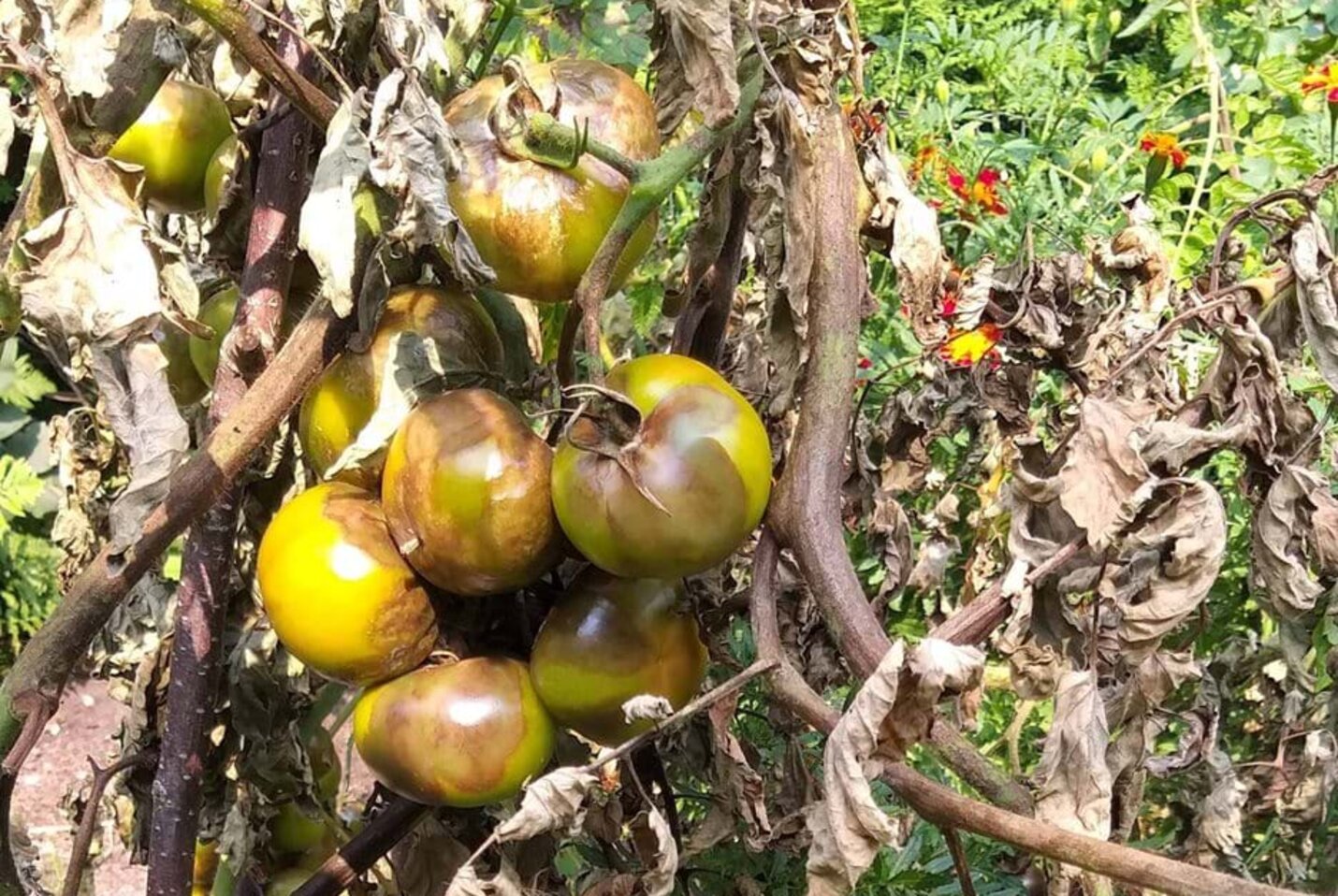
Photo: Grøn kommunikation ©
Sick tomatoes
Sadly, tomatoes can get a disease while growing. Some diseases may be easy to manage, while others are much more difficult to treat. Here are some of the most common tomato plant diseases:
Blossom rot:
Blossom end rot gives the tomato a black spot a the bottom where the blossom once was. The most recent research says that the plant disease is caused by shortage of water, which makes it difficult for the plant to transport chalcium from the soil to the plant. Furthermore, the plant may be stressed due to e.g. a dry climate, strong sunlight, high temperatures and too much nitrogen fertilizer. These factors prevent the chalcium to be transported to the plant cells that need the nutrition. When it comes to irrigation, try to use tap water now and then. Unlike rain water, tap water contains chalcium.
Larvae of the bright-line brown-eye:
Your plants can also be eaten by the larvae from the bright-line brown-eye which is a moth. The larvae eat the tomatoes and it may be difficult to discover this before the damage is done. In June the moth will lay its eggs, which turns into either green or brown larvae. Therefore, pay attention to this and remove the larvae if you see them in the greenhouse.
Whiteflies:
Lastly, we have the whiteflies. They fly around the plants and suck the sap from the plants. If the leaves has a shiny and sticky surface, it indicates that there have been whiteflies. To prevent this you can use pesticides. In case you prefer to avoid pesticides you can instead get some ichneumon flies. These are especially usefull for control of whitefly larvae.
Keep an eye on your plants
In the process your tomato plants may change and this may indicate that something is wrong. For instance if the leaves turns yellow it often is a sign of shortage of fertiliser. In this case you can choose to add some fertiliser to the soil so the plant gets the nourishment it needs. Curled leaves indicates accumulations of starch in the leaves. This may occur early in the year. Here the reason is that the temperature is too low at night so the leaves can convert starch to sugar. If it is too hot the process stops and the leaves will start curling.
In case your plant gets a lot of leaves but not tomatoes, it may indicate that you need to trim your plants. When a tomato plant has a lot of leaves it will affect the energy of the plant, which results in fewer leaves and fewer big and delicious tomatoes. Too much heat during the flower initiation affects the yield. Your plants can also get grey mould or brown rot. It appears as brown spots on the leaves and the stems. The reason to this is due to high humidity. For this you can get automatic window openers, which makes it easy to regulate the humidity in your greenhouse. It is also important to always remove the infested plants and leaves.
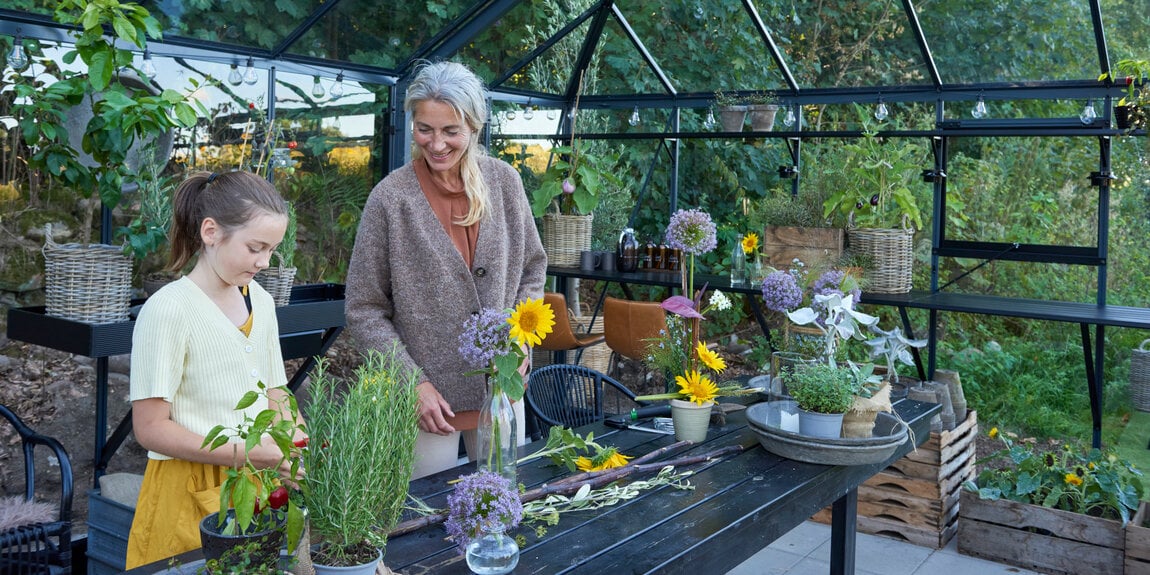
Transform Your Greenhouse Life
Are you looking for fresh inspiration to transform your greenhouse life into a lush paradise? Let's explore new ideas and tips together that will make your green haven even more magical!
JULIANA GROUP
Juliana Group is a leading global supplier of quality residential greenhouses. Founded in 1963 by Mogens A. Stærmose in Odense, Denmark, the family-owned company is today run by third generation, Nikolaj Stærmose. Headquarter and production remains Odense-based with subsidiaries in the UK and Germany and export to more than 20 countries.
’We help people grow’. That is why our brands Halls, Juliana, and Gabriel Ash all set the frame for experiences that are as natural as they are magical. Despite our long history, we’re future-focused and curious on how we can improve the sustainability of our greenhouses. Learn more about Juliana and find inspiration for life in the greenhouse in our inspirational universe.
